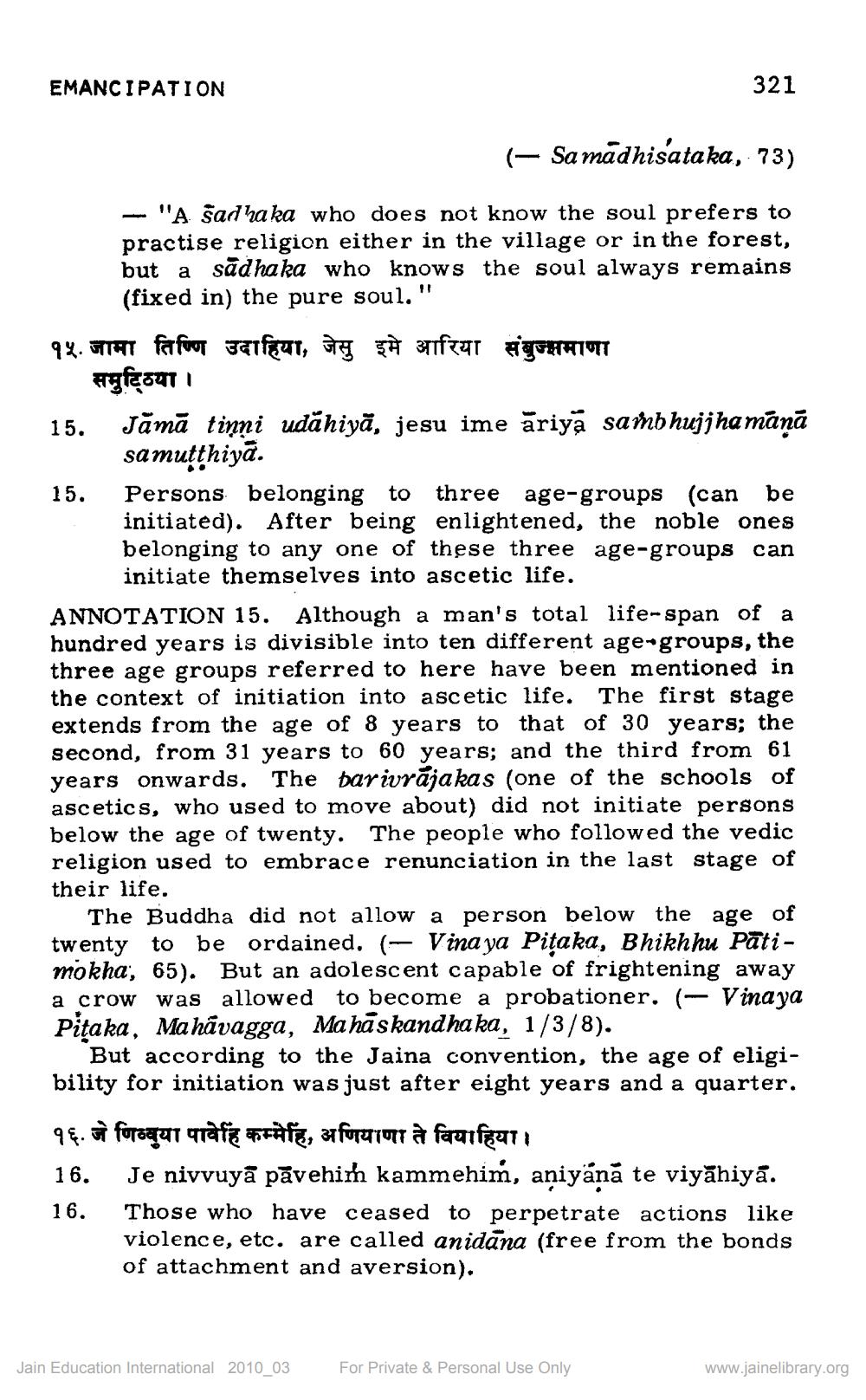________________
EMANCIPATION
321
(- Samadhisataka, 73)
- "A sad haka who does not know the soul prefers to practise religion either in the village or in the forest, but a sādhaka who knows the soul always remains
(fixed in) the pure soul." १५. जामा तिण्णि उदाहिया, जेसु इमे आरिया संबुज्झमाणा
refoot 15. Jāmā tinni udahiyā, jesu ime äriya sambhujjha manā
samutthiyā. 15. Persons belonging to three age-groups (can be
initiated). After being enlightened, the noble ones belonging to any one of these three age-groups can
initiate themselves into ascetic life. ANNOTATION 15. Although a man's total life-span of a hundred years is divisible into ten different age-groups, the three age groups referred to here have been mentioned in the context of initiation into ascetic life. The first stage extends from the age of 8 years to that of 30 years; the second, from 31 years to 60 years; and the third from 61 years onwards. The barivrăjakas (one of the schools of ascetics, who used to move about) did not initiate persons below the age of twenty. The people who followed the vedic religion used to embrace renunciation in the last stage of their life.
The Buddha did not allow a person below the age of twenty to be ordained, (- Vina ya Pitaka, Bhikhhu Pātimokha, 65). But an adolescent capable of frightening away a crow was allowed to become a probationer. (- Vinaya Pitaka, Mahāvagga, Mahā skandhaka, 1/3/8).
But according to the Jaina convention, the age of eligibility for initiation was just after eight years and a quarter. १६. जे णिव्वया पावेहि कम्मेहि, अणियाणा ते वियाहिया। 16. Je nivvuyā pāvehish kammehim, aniyānā te viyāhiyā. 16. Those who have ceased to perpetrate actions like
violence, etc. are called anidāna (free from the bonds of attachment and aversion).
Jain Education International 2010_03
For Private & Personal Use Only
www.jainelibrary.org




